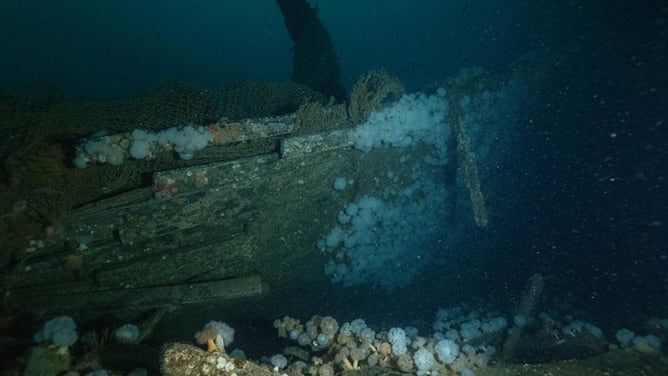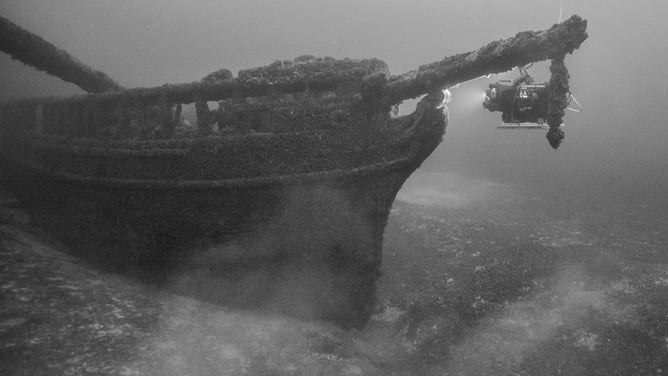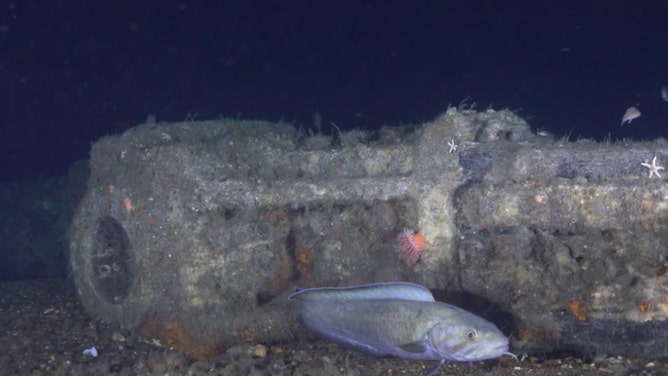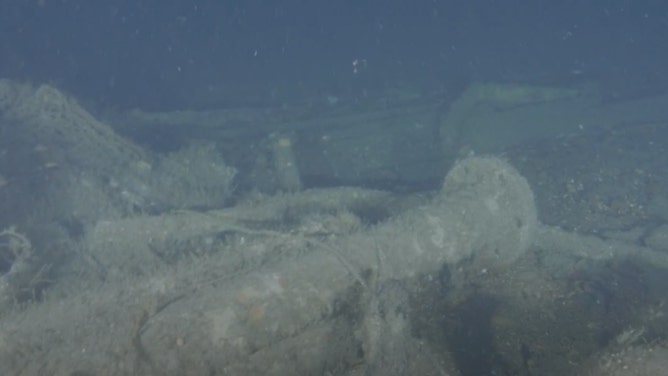Researchers find ship's wreckage after nearly six decades
Since the late 1970s, various researchers have been searching for the final resting place of the U.S. Revenue Cutter Bear.
BOSTON – The Coast Guard announced Thursday that researchers found the wreckage of the U.S. Revenue Cutter Bear, which sank during rough weather, off the coast of Nova Scotia, nearly six decades ago.
The wooden ship served various functions for the U.S. government from 1874 until its decommissioning in 1944.
The bear was being towed from a dock in Canada to Philadelphia when it encountered a gale on March 19, 1963.
Historians credit the gale and rough waves for severing the tow-line, which eventually led to the ship’s sinking.

A storm system in the North Atlantic likely played a role in the sinking of the U.S. Revenue Cutter Bear.
(U.S. Weather Bureau)
"During the transit, the ship and tow encountered heavy seas, causing the wooden vessel’s plank seams to open to the seawater, said Dr. William Thiesen, the Coast Guard Atlantic Area’s historian.
Researchers spent four decades trying to locate the wreckage, but officials say it wasn’t until 2019 that an organized search by the Coast Guard and National Oceanic and Atmospheric Administration helped find the ship’s wreckage.
Joe Hoyt, a maritime archeologist with NOAA’s Office of National Marine Sanctuaries, said that a crew spent weeks mapping with seafloor with sonar technology and came across an anomaly consistent with wreckage.
In June 2021, a remotely operated vehicle collected underwater imagery of the debris, which researchers used in their efforts to identify the wreckage.
A team of historians and archeologists from several agencies recently reviewed the data collected over several years and said that they are "reasonably certain" that the wreckage is the U.S. Revenue Cutter Bear.
Ship has a unique history
The steam and sail-powered ship was built in Scotland back in 1874 and was purchased by the U.S. government some ten years later.
During its tenure, the ship served in numerous roles for the departments of Treasury and Navy, but historians say it’ll always be remembered for its decades of service in the Arctic.
"During the Bear’s 40-year career in Alaska, the cutter performed some of the most daring and successful Arctic rescues in history," Dr. Thiesen said. "When malnourished Native Americans needed food, the Bear brought it. When stranded whalers needed rescue, Bear saved them. One hundred years ago, when thousands of Alaskans contracted the Spanish flu in the pandemic, Bear brought doctors and medicines."
Historians say the Bear completed nearly every task and was the first U.S. ship ever commanded by an African-American.
After its Arctic missions, the ship served in an expedition to the Antarctic and participated in World War II patrols, before being sold to a Canadian Company in 1948.
It was in Nova Scotia, where the stricken ship was found and purchased by a Pennsylvania man who planned to make the boat a floating restaurant.
Not all were happy with plans for the ship and say its sinking in March 1963 was a way the wooden vessel’s distinguished history lived on.
"Some believe that the venerable Bear chose to end her career underway at sea rather than suffer the indignity of becoming a floating restaurant," Dr. Thiesen said.




